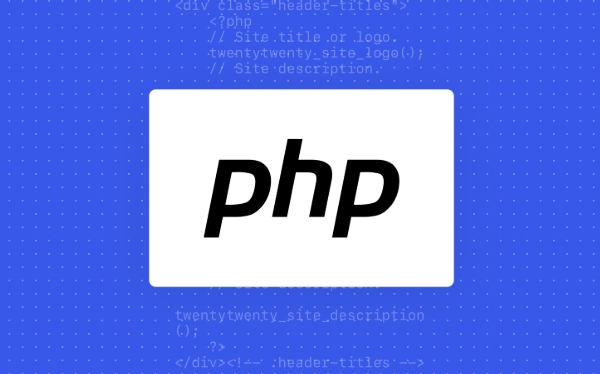The steps to install the Laravel PHP framework are as follows: 1. Make sure that the system has PHP >= 8.0, Composer and related extensions installed, and can be verified through php -v and composer --version; 2. Use the Composer command composer create-project laravel/laravel your-project-name to create a project. Windows users may require administrator permissions, and domestic users can configure mirror acceleration; 3. Set storage and bootstrap/cache directory permissions, generate .env files and configure database information; 4. Run php artisan serve to start the development server, visit http://127.0.0.1:8000 to verify whether the installation is successful. Follow the above steps and there will generally be no problems.

Installing the Laravel PHP framework is actually not complicated. As long as you know how to use Composer, you can basically do it in a few minutes. Laravel is one of the most popular PHP frameworks at present, providing elegant syntax and rich features for rapid development. Below I will explain how to install it in a few steps and what to pay attention to.

1. Ensure that the system environment meets the requirements
Before you start, you need to confirm that the following components are installed on the local or server environment:

- PHP >= 8.0 (It is recommended to use the latest stable version)
- Composer (PHP's dependency management tool)
- OpenSSL, PDO, Mbstring, Tokenizer, XML, Ctype, JSON, BCMath and other extensions
You can run php -v and composer --version from the command line to see if PHP and Composer are installed.
If Composer is not installed yet, you can download the installer on the official website or use the following command to install the global version:

curl -sS https://getcomposer.org/installer | php mv composer.phar /usr/local/bin/composer
2. Create a Laravel project using Composer
The most recommended way to install Laravel is to use Composer's create-project command. Open the terminal, go to the directory where you want to create the project, and run:
composer create-project laravel/laravel your-project-name
Here your-project-name can be replaced with your own project name, such as myblog or laravel-app .
After this step, Composer will automatically download and install Laravel's core files and all its dependencies.
Note: If you are using a Windows system, administrator permissions may be required to execute smoothly. In addition, if domestic users feel that the download is slow, they can set up a Composer image first:
composer config -g repo.packagist composer https://packagist.phpcomposer.com
3. Set permissions and configuration files (optional but important)
After the installation is complete, some details need to be dealt with:
Storage directory permissions : Make sure
storageandbootstrap/cachedirectories have write permissions, otherwise an error will occur.chmod -R 775 storage bootstrap/cache
Generate application key : Laravel requires the key in the
.envfile to encrypt the data. If there is no.envfile, you can copy.env.exampleand rename it to.envand run:php artisan key:generate
Database configuration : Open the
.envfile, find the configuration item starting withDB_*, and fill in your database information, such as user name, password, database name, etc.
4. Run the test server to verify that the installation is successful
Laravel comes with a lightweight development server, which is very suitable for testing whether the installation is successful.
After entering the project directory, run:
php artisan serve
By default, the service will run on http://127.0.0.1:8000 . Open the browser to access this address and see Laravel's welcome page, it means that the installation has been successful!
Basically these are the operations. The whole process is not complicated, but there are several small things that are easy to ignore, such as permission issues and .env configuration. As long as you do as you say step by step, you will generally not make any mistakes.
The above is the detailed content of how to install laravel php framework using composer. For more information, please follow other related articles on the PHP Chinese website!

Hot AI Tools

Undress AI Tool
Undress images for free

Undresser.AI Undress
AI-powered app for creating realistic nude photos

AI Clothes Remover
Online AI tool for removing clothes from photos.

Clothoff.io
AI clothes remover

Video Face Swap
Swap faces in any video effortlessly with our completely free AI face swap tool!

Hot Article

Hot Tools

Notepad++7.3.1
Easy-to-use and free code editor

SublimeText3 Chinese version
Chinese version, very easy to use

Zend Studio 13.0.1
Powerful PHP integrated development environment

Dreamweaver CS6
Visual web development tools

SublimeText3 Mac version
God-level code editing software (SublimeText3)

Hot Topics
 What are some best practices for versioning a PHP-based API?
Jun 14, 2025 am 12:27 AM
What are some best practices for versioning a PHP-based API?
Jun 14, 2025 am 12:27 AM
ToversionaPHP-basedAPIeffectively,useURL-basedversioningforclarityandeaseofrouting,separateversionedcodetoavoidconflicts,deprecateoldversionswithclearcommunication,andconsidercustomheadersonlywhennecessary.StartbyplacingtheversionintheURL(e.g.,/api/v
 How do I implement authentication and authorization in PHP?
Jun 20, 2025 am 01:03 AM
How do I implement authentication and authorization in PHP?
Jun 20, 2025 am 01:03 AM
TosecurelyhandleauthenticationandauthorizationinPHP,followthesesteps:1.Alwayshashpasswordswithpassword_hash()andverifyusingpassword_verify(),usepreparedstatementstopreventSQLinjection,andstoreuserdatain$_SESSIONafterlogin.2.Implementrole-basedaccessc
 What are the differences between procedural and object-oriented programming paradigms in PHP?
Jun 14, 2025 am 12:25 AM
What are the differences between procedural and object-oriented programming paradigms in PHP?
Jun 14, 2025 am 12:25 AM
Proceduralandobject-orientedprogramming(OOP)inPHPdiffersignificantlyinstructure,reusability,anddatahandling.1.Proceduralprogrammingusesfunctionsorganizedsequentially,suitableforsmallscripts.2.OOPorganizescodeintoclassesandobjects,modelingreal-worlden
 What are weak references (WeakMap) in PHP, and when might they be useful?
Jun 14, 2025 am 12:25 AM
What are weak references (WeakMap) in PHP, and when might they be useful?
Jun 14, 2025 am 12:25 AM
PHPdoesnothaveabuilt-inWeakMapbutoffersWeakReferenceforsimilarfunctionality.1.WeakReferenceallowsholdingreferenceswithoutpreventinggarbagecollection.2.Itisusefulforcaching,eventlisteners,andmetadatawithoutaffectingobjectlifecycles.3.YoucansimulateaWe
 How can you handle file uploads securely in PHP?
Jun 19, 2025 am 01:05 AM
How can you handle file uploads securely in PHP?
Jun 19, 2025 am 01:05 AM
To safely handle file uploads in PHP, the core is to verify file types, rename files, and restrict permissions. 1. Use finfo_file() to check the real MIME type, and only specific types such as image/jpeg are allowed; 2. Use uniqid() to generate random file names and store them in non-Web root directory; 3. Limit file size through php.ini and HTML forms, and set directory permissions to 0755; 4. Use ClamAV to scan malware to enhance security. These steps effectively prevent security vulnerabilities and ensure that the file upload process is safe and reliable.
 What are the differences between == (loose comparison) and === (strict comparison) in PHP?
Jun 19, 2025 am 01:07 AM
What are the differences between == (loose comparison) and === (strict comparison) in PHP?
Jun 19, 2025 am 01:07 AM
In PHP, the main difference between == and == is the strictness of type checking. ==Type conversion will be performed before comparison, for example, 5=="5" returns true, and ===Request that the value and type are the same before true will be returned, for example, 5==="5" returns false. In usage scenarios, === is more secure and should be used first, and == is only used when type conversion is required.
 How can you interact with NoSQL databases (e.g., MongoDB, Redis) from PHP?
Jun 19, 2025 am 01:07 AM
How can you interact with NoSQL databases (e.g., MongoDB, Redis) from PHP?
Jun 19, 2025 am 01:07 AM
Yes, PHP can interact with NoSQL databases like MongoDB and Redis through specific extensions or libraries. First, use the MongoDBPHP driver (installed through PECL or Composer) to create client instances and operate databases and collections, supporting insertion, query, aggregation and other operations; second, use the Predis library or phpredis extension to connect to Redis, perform key-value settings and acquisitions, and recommend phpredis for high-performance scenarios, while Predis is convenient for rapid deployment; both are suitable for production environments and are well-documented.
 How do I perform arithmetic operations in PHP ( , -, *, /, %)?
Jun 19, 2025 pm 05:13 PM
How do I perform arithmetic operations in PHP ( , -, *, /, %)?
Jun 19, 2025 pm 05:13 PM
The methods of using basic mathematical operations in PHP are as follows: 1. Addition signs support integers and floating-point numbers, and can also be used for variables. String numbers will be automatically converted but not recommended to dependencies; 2. Subtraction signs use - signs, variables are the same, and type conversion is also applicable; 3. Multiplication signs use * signs, which are suitable for numbers and similar strings; 4. Division uses / signs, which need to avoid dividing by zero, and note that the result may be floating-point numbers; 5. Taking the modulus signs can be used to judge odd and even numbers, and when processing negative numbers, the remainder signs are consistent with the dividend. The key to using these operators correctly is to ensure that the data types are clear and the boundary situation is handled well.






